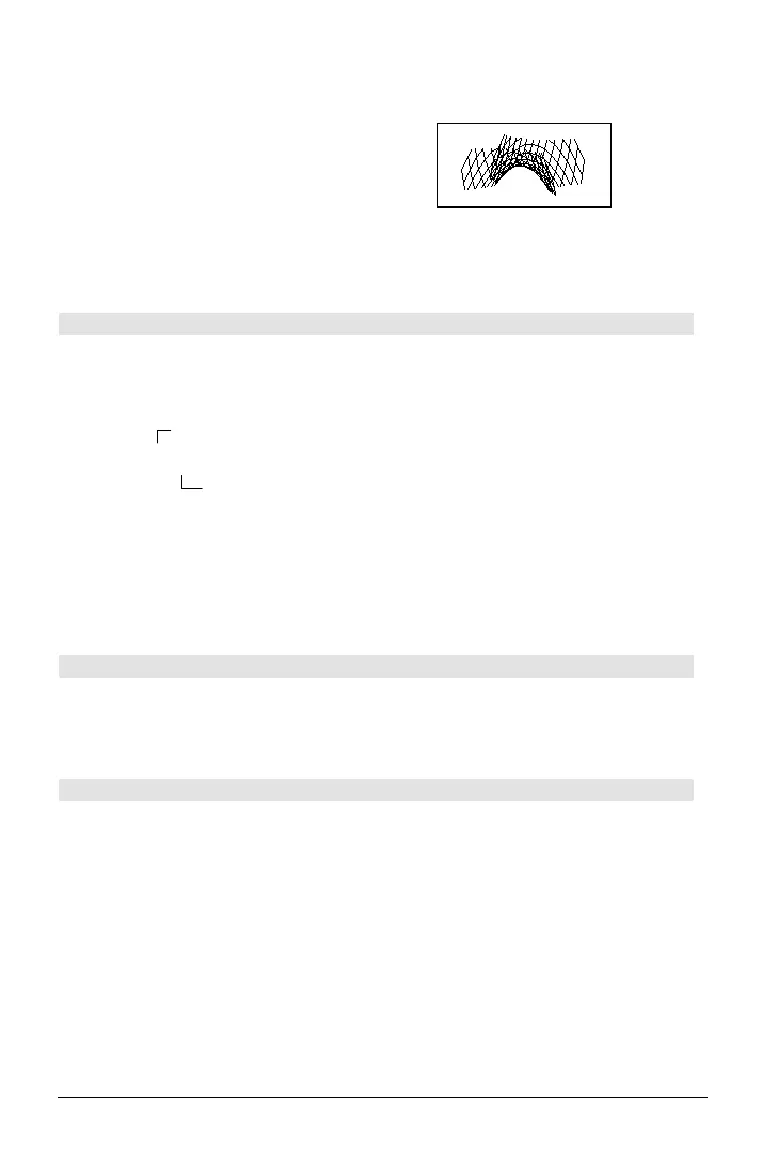196 Appendix A: Functions and Instructions
Some valid variations of this instruction are:
Function graphing
Graph
expr
,
x
Parametric graphing Graph
xExpr
,
yExpr
,
t
Polar graphing Graph
expr
, q
Sequence graphing Not allowed.
3D graphing
Graph
expr
,
x
,
y
Diff Equations graphing Not allowed.
Note: Use
ClrGraph to clear these functions, or
go to the Y= Editor to re-enable the system Y=
functions.
In 3D graphing mode:
Graph (v^2 ì w^2)/4,v,w ¸
4Hex MATH/Base menu
integer1
4Hex ⇒
integer
Converts
integer1
to a hexadecimal number.
Binary or hexadecimal numbers always have a 0b
or 0h prefix, respectively.
256 4Hex ¸ 0h100
0b111100001111
4Hex ¸ 0hF0F
0b
binaryNumber
0h
hexadecimalNumber
Without a prefix,
integer1
is treated as decimal
(base 10). The result is displayed in hexadecimal,
regardless of the
Base mode.
If you enter a decimal integer that is too large for
a signed, 32-bit binary form, a symmetric modulo
operation is used to bring the value into the
appropriate range.
identity() MATH/Matrix menu
identity(
expression
) ⇒
matrix
Returns the identity matrix with a dimension of
expression
.
expression
must evaluate to a positive integer.
identity(4) ¸
1 0 0 0
0 1 0 0
0 0 1 0
0 0 0 1
If CATALOG
If
Boolean expression
If
Boolean expression
Then
statement
block
EndIf
If
Boolean expression
evaluates to true, executes
the single statement
statement
or the block of
statements
block
before continuing execution.
If
Boolean expression
evaluates to false, continues
execution without executing the statement or
block of statements.
block
can be either a single statement or a
sequence of statements separated with the “:”
character.
Program segment:
©
:If x<0
:Disp "x is negative"
©
—
or—
©
:If x<0 Then
: Disp "x is negative"
: abs(x)! x
:EndIf
©
A binary number can have up to
32 digits. A hexadecimal number
can have up to 8.
Zero, not the letter O, followed by b or h.
